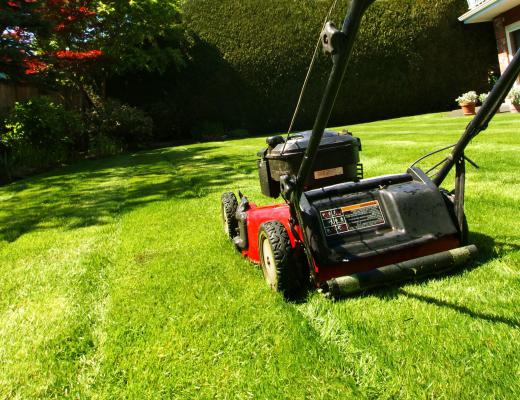Solid tires are non-pneumatic, meaning that they are not filled with air. These types of tires are used primarily for industrial or light commercial applications. Light industrial and personal use vehicles like forklifts, lawn mowers, golf carts, baby carriages, wheelbarrows, and skateboards are some of the most common places to find solid tires. They are either made of solid rubber, or molded from plastic compounds.
Solid tires are significantly more prone to roll-over than pneumatic tires, which is why they are not recommended for fast vehicles. On the positive side, they are much more resistant to wear and tear than their air-filled counterparts. They can handle chunks being removed, or other basic damage without needing replacement. Recycling centers and manufacturers who handle glass products are likely to use solid tires, because of their resistance to puncture damage. They are also able to handle a significantly higher weight load than pneumatic tires without the fear of blowouts, which makes them appealing for slow-moving industrial machines that require heavy lifting.

There are several ways that solid tires can be manufactured. In the first, a metal wheel holder is placed into a mold. Liquid rubber, or liquid polyurethane, is poured into the mold and dries hard around the metal wheel. Another process uses a rolling metal wheel with adhesive attached to it. The sticky surface is placed against a rubber sheet, and the wheel is rolled, collecting layers of rubber as it moves until enough material accumulates to form a full tire. The tire is then installed onto the vehicle using a specialized press machine.

Solid pneumatic tires are a type of solid tires with a paradoxical name. In reality, these tires are not pneumatic at all, but are simply shaped and constructed similarly to air-filled tires, with layers of rubber and metal ply that give it some of the spring that pneumatic tires are known for. The major advantage of solid pneumatic tires is that they do not require a press to install.

Solid pneumatic tires can be used on a variety of industrial machines. Light industrial machines like forklifts find uses for them outdoors, where the springy nature of the tires makes them a better fit for areas with a chance of rollover. Backhoes and similar construction vehicles have also found them a suitable fit on construction sites, where the puncture of pneumatic tires is probable.
